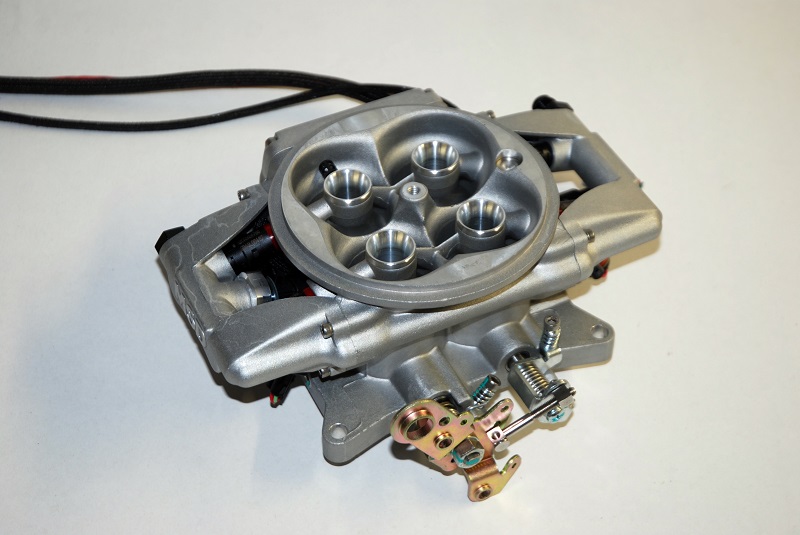
Electronic Fuel Injection (EFI) has been around for decades, but plenty of hot-rodders remain spooked by the systems:
“There are wires running everywhere.”
“You need dozens of sensors.”
“There are a bunch of multifarious black boxes looking after top-secret duties.”
“They cost a fortune.”
“You must be a computer hacker to make the thing run and I don’t have a laptop.”
“It’s too complicated. I’ll stick to carburetors.”
Of course, none of that is true. And with the entry-level EFI setups out there, installation, setup, operation, and reasonable cost, might be much easier than you imagined.
Case-in-point: MSD’s Atomic EFI.
An Introduction to the MSD Atomic EFI TBI Master Kit
With MSD’s Atomic EFI TBI Master Kit, you get almost everything needed to convert your car from a carburetor to fuel injection. MSD includes the throttle body, a power module (complete with a wide band oxygen sensor), fuel pump, filter, a handheld controller, and all of the necessary small parts.
“The Atomic Throttle Body Injection system is the easiest way to convert your classic car to EFI,” MSD officials say. “As far as performance, the advanced self-learning technology of the Atomic is constantly monitoring and analyzing the engine’s operating conditions ensuring that you receive the best possible driveability. With the ECU and built-in sensors integrated into the throttle body, the Atomic has fewer wiring connections than any other system, plus there is no bulky ECU to mount. This design makes the conversion to EFI much easier to install and program, while keeping things clean under the hood.”
What you get with the Atomic EFI is great performance and superior drivability. Your hot rod will start quicker, have a smoother idle, and provide great throttle response.
The MSD system is designed to integrate easily with a conventional MSD ignition box. It allows you to control initial timing with a handheld monitor (which can be removed once the car is running, or used to monitor engine performance in real time).
For integrating timing using an MSD ignition system, you’ll need an MSD adjustable rotor to correct rotor phasing.
The system can also operate with an old-fashioned point trigger ignition!
Installing an MSD Atomic EFI Kit
There are three main components of the Atomic EFI TBI Kit:
- Throttle Body
- Power Module
- Handheld Monitor
Throttle Body Overview
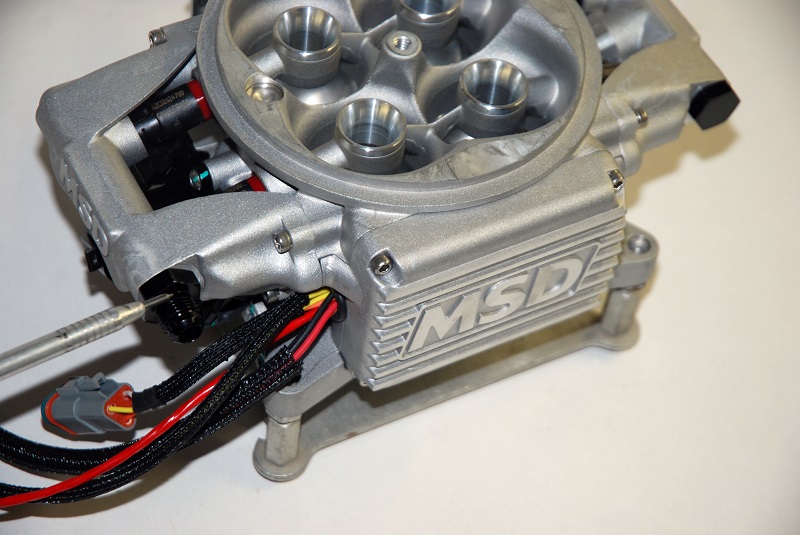
The ECU is built right into the passenger side of the throttle body along with several built-in sensors including the Throttle Position Sensor (TPS), Manifold Absolute Pressure (MAP), Intake Air Temperature (IAT), and the Fuel Pressure Sensor. The MSD Atomic EFI kit eliminates the need to mount or connect these sensors.
The actual throttle body is designed so that it bolts right up to a common square bore (Holley 4150 style) intake manifold. It’s shaped so that a common dropped base carburetor air cleaner fits right over the top. On the driver’s side, the throttle bracket will accept all normal cables; return springs, and transmission control cables.
You just have to remove them from your carburetor and transfer them to the new unit.
There are no external fuel rails. MSD incorporates internal passages within the throttle body to supply fuel to the four integral injectors.
Externally, you simply have to hook up the supply line (from the fuel pump). MSD provides you with a choice of a -6 AN hookup or a barb fitting hookup for the fuel line on the throttle body.
Power Module Overview
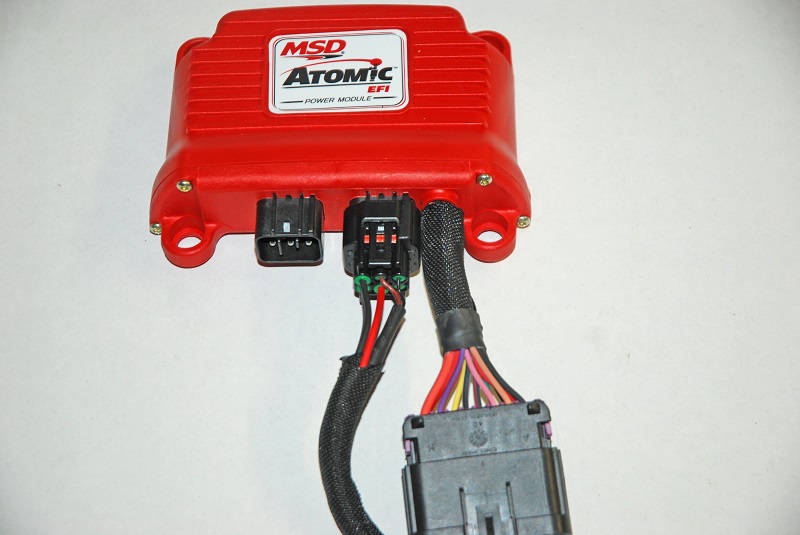
The Atomic EFI TBI power module is the communication hub for the entire system.
The module supplies power to the fuel pump (there’s no need for an external relay), and has two activation wires allowing you to set temperatures for dual electric cooling fans. The Atomic TBI power modules plug easily into the throttle body-mounted engine control unit with a single, clean connection. Then, simply plug in the handheld monitor and you’re ready to go!
There are connections for the wide-band oxygen sensor, the special handheld control monitor, as well as power and communication to the throttle body.
Handheld Control Monitor
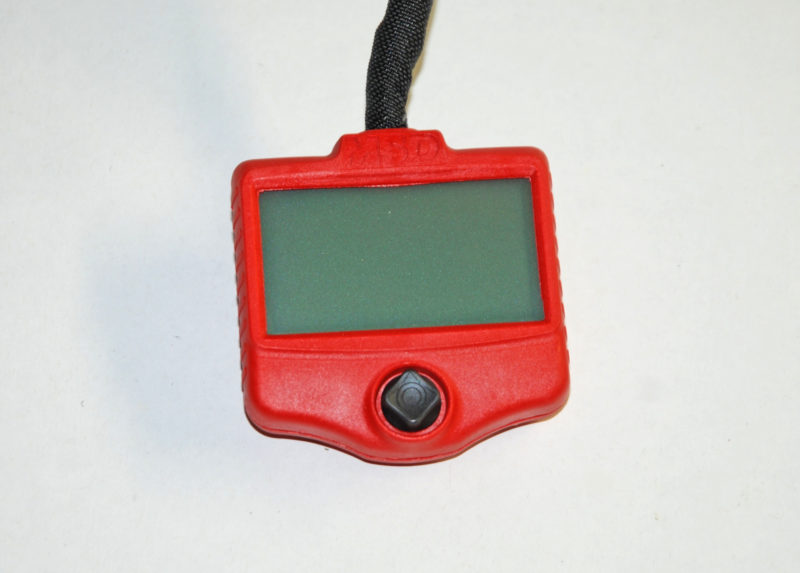
The handheld control monitor (which simply plugs into the power module) is what you use to set up the EFI system for your car. You use a basic joystick for the initial (and later, advanced) setup.
For initial setup, you enter your engine displacement, number of cylinders, camshaft specs (based upon duration at 0.050-inch tappet lift), fuel pump type, target idle rpm, and finally, select whether you want the ECU to control ignition timing. After the initial setup selections are made and the engine is running, the handheld control can be removed, or remain connected. When connected, there is a “Dash and Gauges” screen which displays engine parameters in real-time, which is very cool.
Once the basic setup is established, the Atomic EFI system does everything else for you.
“It is a self-tuning EFI system that continuously adjusts after the basic configuration is complete,” MSD officials say. “There is no laptop programming. Based upon the engine descriptors that you input during the initial setup, the Atomic automatically creates a base fuel map to get the engine running. Once the system is started, the self-learning technology optimizes those maps resulting in the best performance possible. If you drive through altitude changes, temperature swings or other factors the Atomic will adjust accordingly, on the fly. This ensures that your engine will produce excellent drivability at all times, even from the sunny coast to the cool mountains.”
Installing the Wide-Band Oxygen Sensor & Engine Water Temperature Sensors
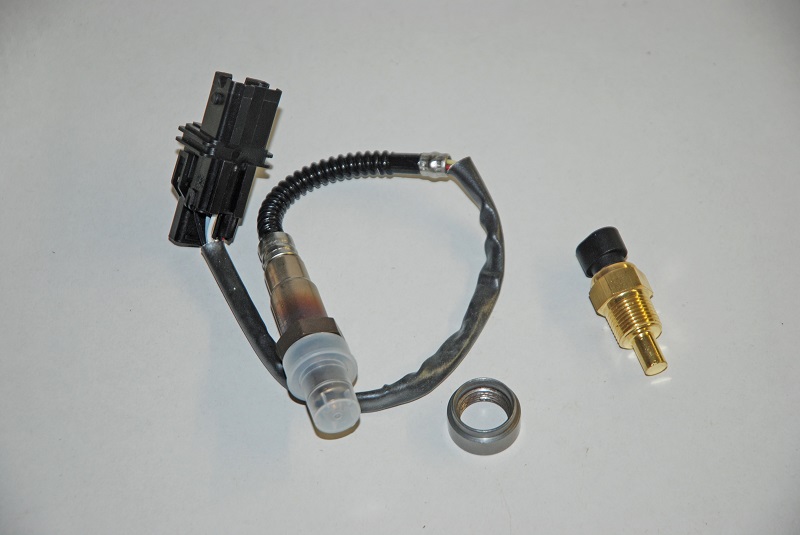
Two other sensors are required for operation, and you must install them. Both are included with the kit.
The wide-band oxygen sensor is responsible for constantly monitoring the exhaust gases and relaying that information to the ECU where fuel-delivery adjustments are made to meet optimal air/fuel targets. Only one O2 sensor is required, and must be installed in a header collector or exhaust downpipe. MSD includes a weld bung for the installation.
(NOTE: Be sure to check your exhaust system for leaks prior to starting the car with the new EFI system. Exhaust system leaks upstream of the O2 sensor can cause sensor-reading havoc and negatively affect engine performance.)
The engine water temperature sensor screws easily into a water jacket location (cylinder head, intake crossover, etc.). It looks like, and installs like an electric water temp gauge sensor.
Atomic EFI Fuel Delivery System Overview
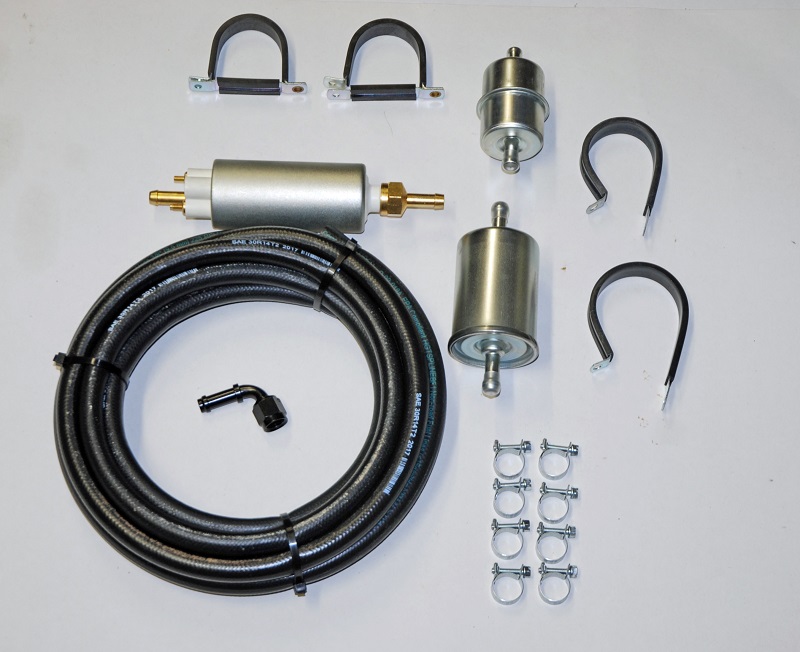
A complete fuel delivery system is also included with the Atomic EFI “master kits.”
That includes a special high-pressure PWM (Pulse Width Modulation) electric fuel pump, a pump pre-filter and post-filter, high-pressure fuel hose, a selection of barb fittings, and a range of high-pressure hose clamps.
The PWM fuel pump is engineered to operate without an external fuel pressure regulator. The internal ECU in the throttle body senses fuel pressure and “tells” the fuel pump how much fuel pressure to supply which eliminates the need to plumb a return line into the system.
For best results, users of in-take fuel pumps should still use a return-style system, MSD officials say.
The PWM system single line is fuel quality- and temperature-dependent. (Basically, when faced with extreme temps, a return-style system is best).
Should you already have an in-tank pump with external fuel pressure regulator and a return system in your rod, the Atomic EFI can be tuned easily to operate with those components by accessing the “Advanced Tuning” options on the handheld monitor.
The biggest consideration when installing the PWM fuel pump is making sure it’s gravity-fed, and reasonably close to the fuel tank.
As with any electric pump, they work best when fuel is pushed rather than pulled. As such, mounting it low and toward the rear of the vehicle (on the inside of a frame rail is a great location) is ideal.
One connection required for the Atomic EFI TBI to operate is an rpm/trigger reference signal.
It’s a 12-volt square wave reference signal from the tach output of an MSD ignition control box. It can also be achieved when connected to the negative side of the coil with a GM HEI or Ford TFI inductive-based ignition system.
Wiring Made Easy
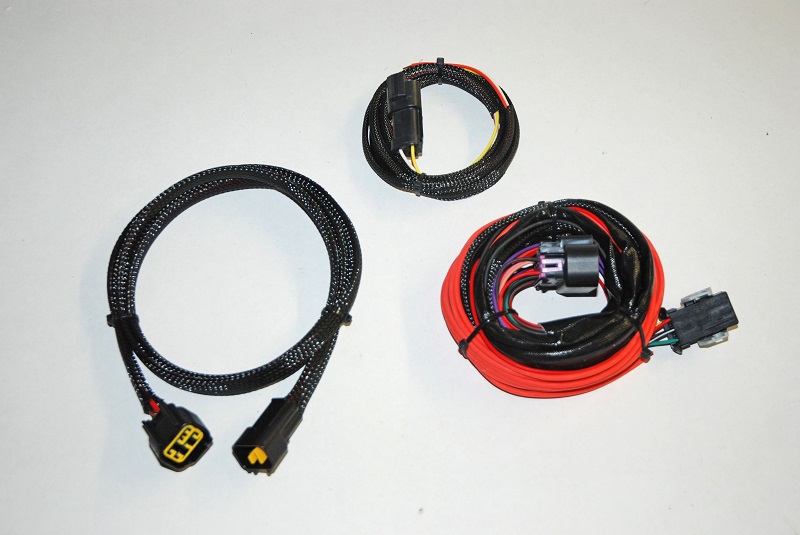
A chaotic maze of wires concerns many vehicle owners . That demon has been exorcised by the MSD Atomic EFI system.
In a basic system setup with no aftermarket ignition box, the wiring you need to hook-up is mostly limited to the following:
- Main Power: Heavy red wire; goes to the battery positive.
- Main Ground: Heavy black wire; goes to negative battery post or ground to engine block.
- Fuel Pump Circuit: Heavy Orange wire; goes to electric fuel pump (no relay necessary).
- Ignition Switch: Red wire; goes to any ignition “on” circuit. You can use the positive side of the coil (do no use this location if you’re using a MSD 6A control box or other CD ignition).
- Wide Band O2 Sensor: Assembled 6-pin wiring harness; single connection.
- Coolant Temp Sensor: Assembled 2-pin wiring harness; single connection.
MSD tells us the Atomic TBI is capable of controlling the ignition timing. In order to use this function, an MSD 6A or other ignition control must be installed. The distributor must also be locked-out.
Aside from the ignition control, the Atomic EFI also features a fuel-controlled rev limiter, and it can be used with any ignition system—from an MSD 6A right down to a set of points. Here, when engine rpm reaches the programmed number, fuel will be cut off.
The MSD Atomic EFI Plays Nicely with Nitrous Systems and Forced Induction Systems
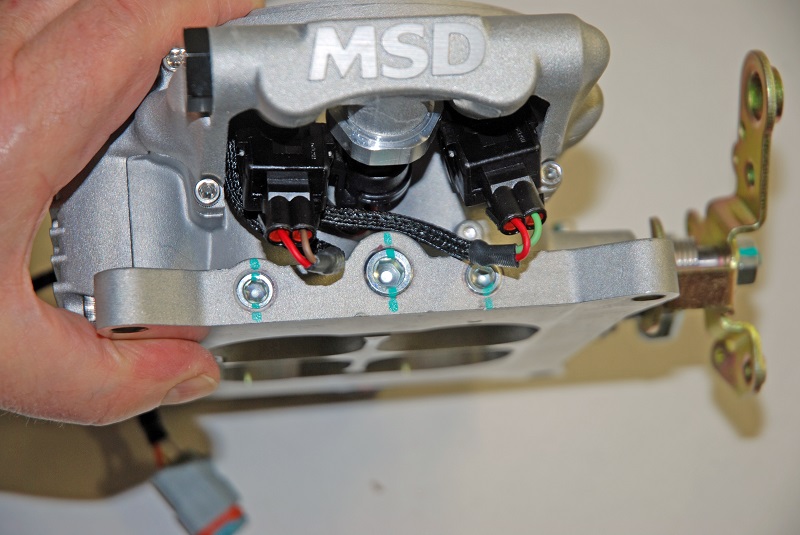
The Atomic EFI can operate in conjunction with wet nitrous systems as well as positive manifold pressure supplied by a draw-through or blow-through forced induction system.
For nitrous, there is a program within the controller that allows you to set a target air/fuel ratio when the nitrous is activated, as well as a selection to retard timing (only when timing control with a MSD 6A ignition box is incorporated).
Keep in mind that a wet nitrous system mandates its own fuel pump to supply the additional fuel nitrous requires. MSD notes that for forced-induction applications there is a target air/fuel ratio setting available within the handheld controller that takes effect when operating under boost.
How Much Does the MSD Atomic EFI Cost?
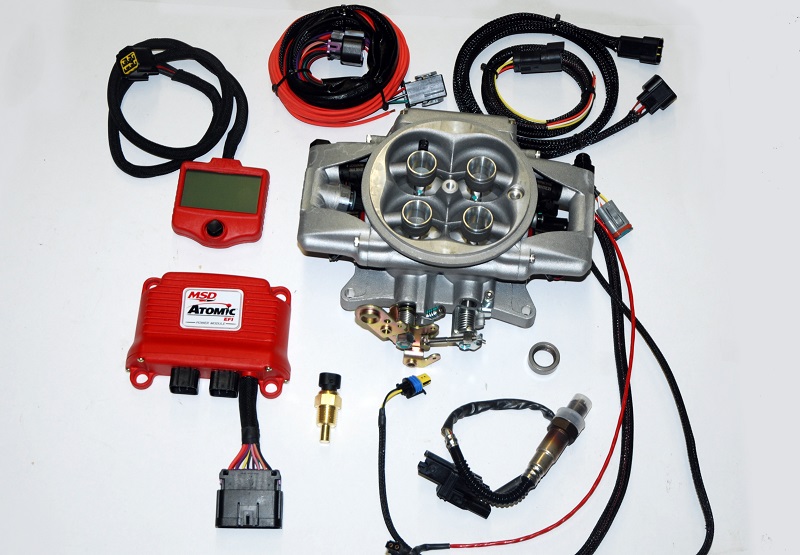
The final consideration regarding MSD’s Atomic EFI is cost.
The system shown in the accompanying photo (Part# MSD-2900) is a deluxe all-inclusive package (MSD calls it a Master Kit for a reason).
Today, you can get the Master Kit for $1,249.95 at Summit Racing.
MSD also offers a scaled-down package which doesn’t include a fuel pump or pump accessories, (Part# MSD-2910) which is currently priced at $999.95 at Summit Racing.
That’s getting all of the benefits of EFI for carburetor prices, and as easy as it is to install, we’re calling that a home run.

When I bought mine in 2015 it was 2,250 dollars now it’s only 1,250 can you please tell me why and how did that happen please
Theyd sold enough units and were about to release an updated version. Any time a company has sold enough of whatever to make a profit and are about to debut that profitable items replacement, that older design usually gets heavily discounted so they can offload as much stock as possible before having to ask retailers to put the new one on their shelves. Aka don’t buy the new shiny whatever as soon as it comes out if you don’t want to overpay
The answer is competition – in the form of a $995 FiTech system that does the same thing.
[…] month, we took a close look at MSD’s entry-level Atomic EFI in the first of our articles designed to demystify electronic fuel injection for anyone interested in converting from carburetion who is intimidated by the wiring and computer […]
[…] we got up close and personal with MSD’s entry-level Atomic EFI—which simplified installation, eliminated the need for a laptop computer, and offered […]
Hey MSD i have a gm tpi and would like something that is not a HEADACHE!I have the pump and all lines.What i would like to do is keep the distributor.Do you have a harness that fits?
[…] MSD Makes Switching to Fuel Injection Easy with Atomic EFI Master Kit […]
I have 3rd and 4th generation Ford trucks. I’m looking to switch to EFI with timing control by the EFI module. I want plug and play. We have 390s 360s 352s and 292 Y block and a couple of 460s. Give me the kits and I’ll go buy them I’m sold.
I have had lots of problems with my Atomic EFI. I am running a return line but my fuel pump is approximately 2.5 feet from the tank. Also I upgraded to a 135 alternator. I ve checked it on and off the car and with current pulley system it only generates 12.5-13.2. Your information indicates it should be putting out in excess of 14.0-14.3.
Now what I have happening is I have a dead spot at 1500-1800rpm and another st 2500-2700rpm. When I hit those spots it can kill the car if Im not right with it jiggling the gas. If i can get through those it ll scream to red line.
I have a new Ford351 Windsor, punched 30 over and stroked to a 408. It is in a 1948 Anglia Can you help me?
Guess you guys never recheck comments. Doesn’t matter I decided to go with the Edelelbrock pro-flo 4 efi systems…. thanks for nut’n.
I have a stock 87 el camino 305ci. Will this system work for me? I dont know the cam specs. Also, does it effect the dash lights?
Thinking about purchasing this Atomic System but after reviewing the installation video’s I’m wondering what happens to the stock fuel pump?
Would this work on a JDM 2 liter turbocharged carb, very old school?
Do they make one for a 1983 GMC 1/2 ton truck with a 305 ci engine , Ca legal.
Hey Wayne, according to Summit Racing’s website, it’ll support engines making up to 525 HP and is Carb-legal under Carb EO number D-722
I recently upgraded my 1973 Buick to Holley EFI Sniper. Can not get a clear explanation as to the fate of the EGR valve. Keep or disconnect, that is the question – as the Bard would say.
Hey Joseph, we reached out to our pals at Holley and here’s what they said:
***
“The Holley sniper is not going to be affected either way. This is left up to the customer if they want to run an EGR or not.”
***
So yeah, it’s up to you to determine your own outrageous fortune here. Thanks for the question!
Hi guys will this run the coil packs as well or do I need an addition MSD for that? If so will they connect together? Cheers
Hi,
I have an LS2 that I’m putting into an Australian built early model Holden commodore! The engine use to be in a sprint car and run a methanol carby with a lsx MSD for coil packs. What do I need to do if I would like to run it fuel injected on current build. If you can assist in what to buy it would be much appreciated! I need everything from the heads up. Cheers
Everybody that shows how to install the master kit never shows the numbers for the hand held device for a 305 gm engine they only say how easy it is show alittle more so we can understand the msd my car is missing and I can figure it out
Nobody ever puts the specs to set the msd master kit I’m having a hard time setting it,it’s missing can’t figure it out.
Hello , I recently bought a 1957 ford thunderbird 312 y block, with atomic efi system, msd locked out distributor with phase rotor, msd 6a ,msd plug wires . 57 ran ok on drive home . Of course like most gear heads I tore it apart and found numerous things ! Now I am trying to hook atomic efi system back up , I found conflicting instructions for controlling timing . What would be the correct connections ? To distributor ? Red wire with red and black inside ,off throttle body or off 6a not sure. Thanks Mark